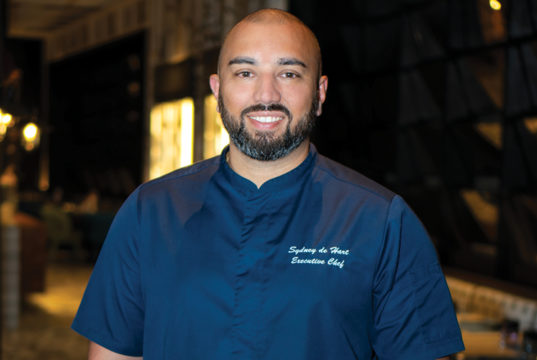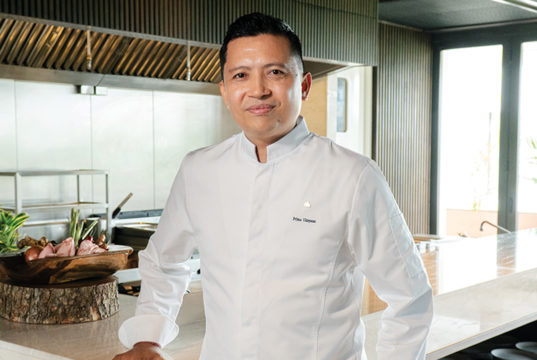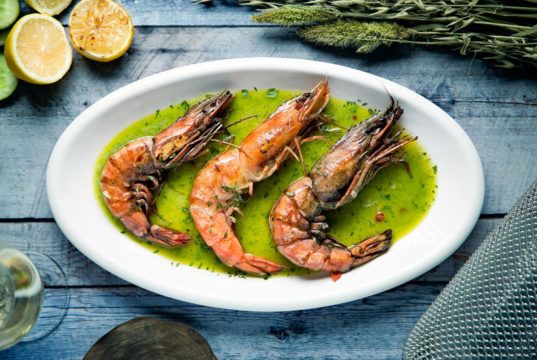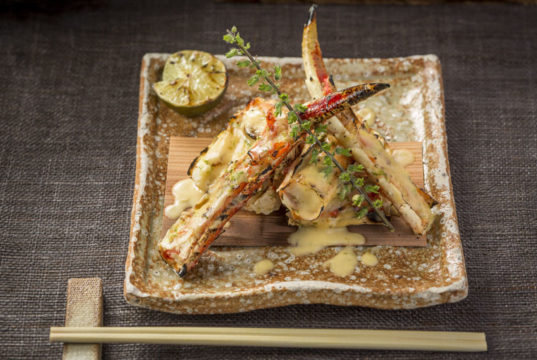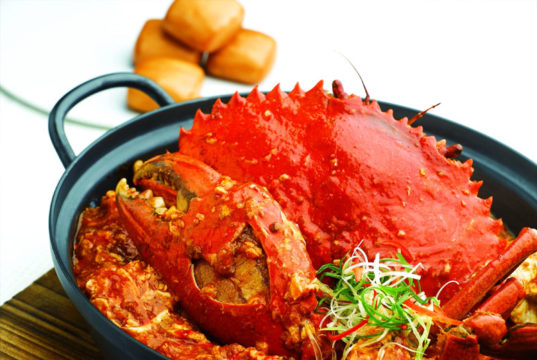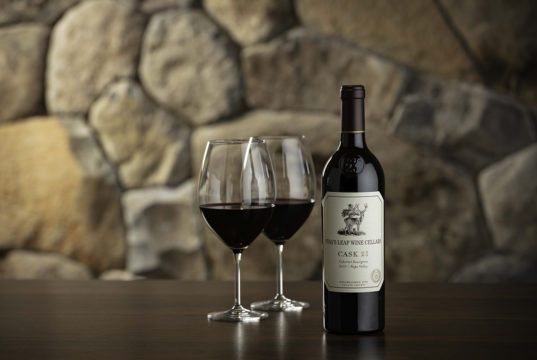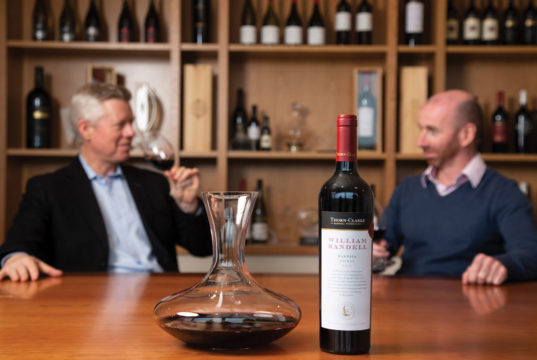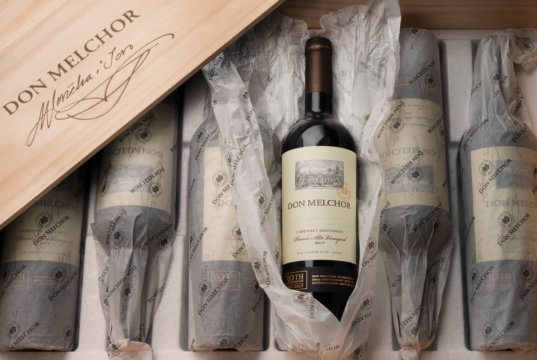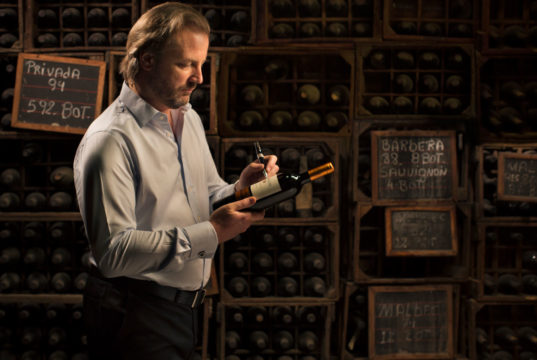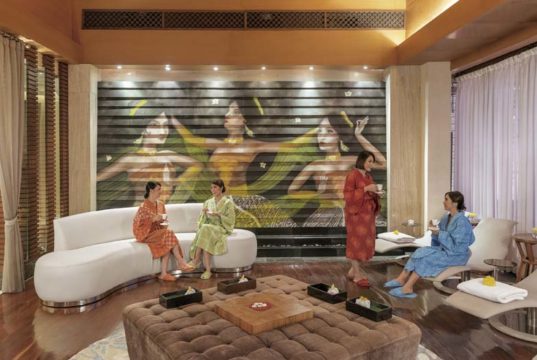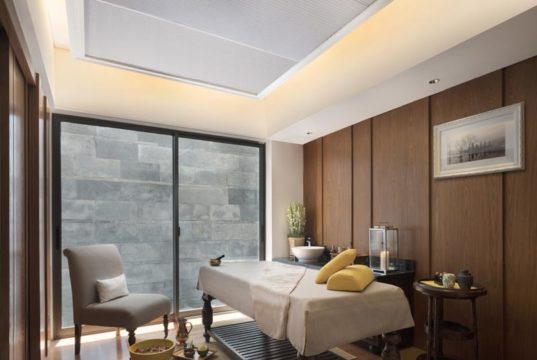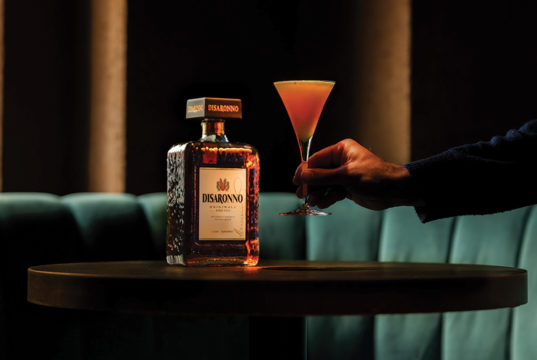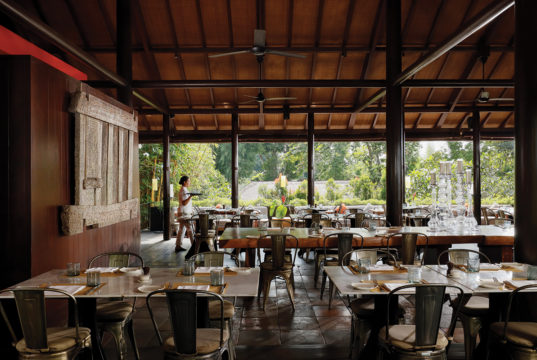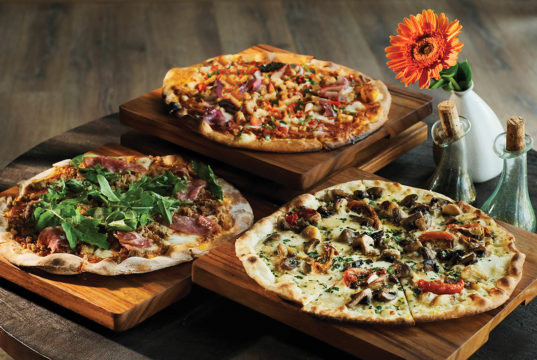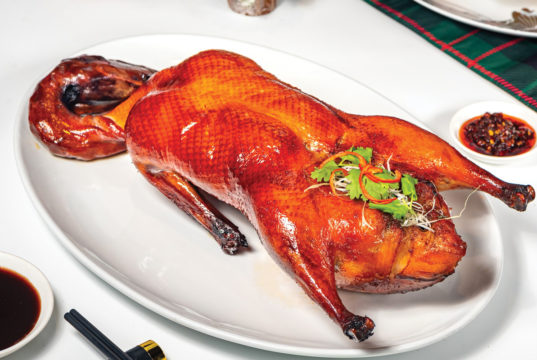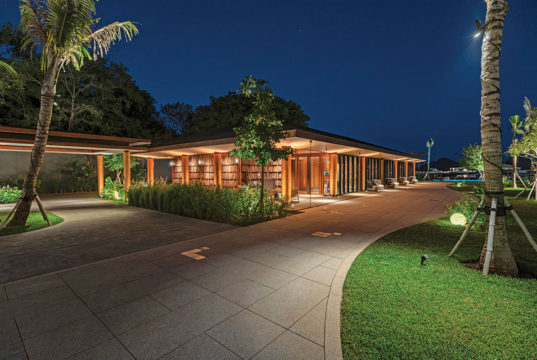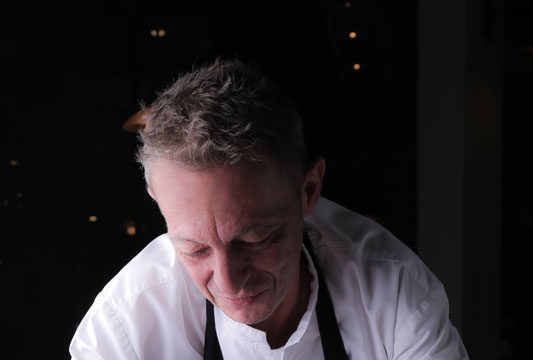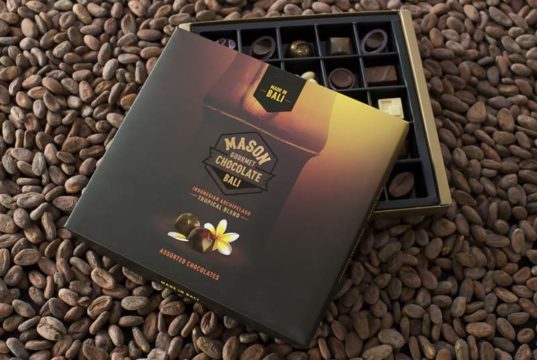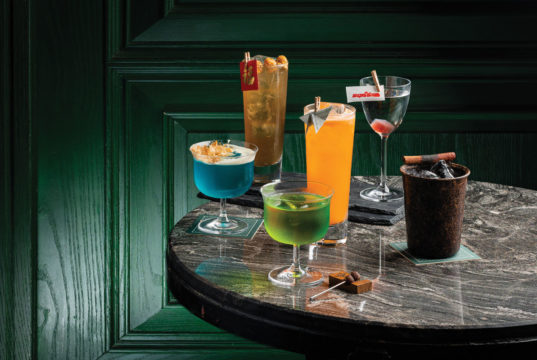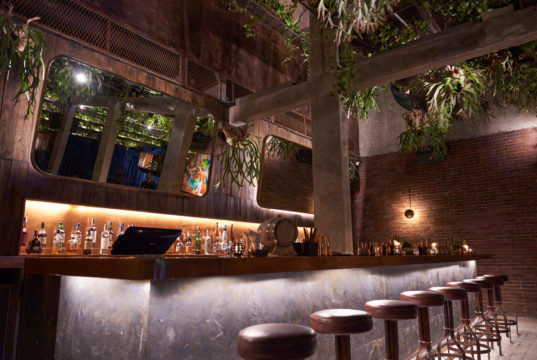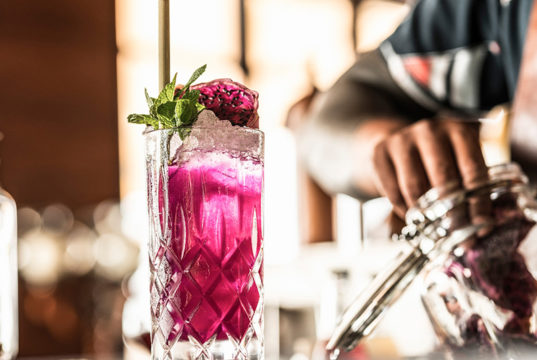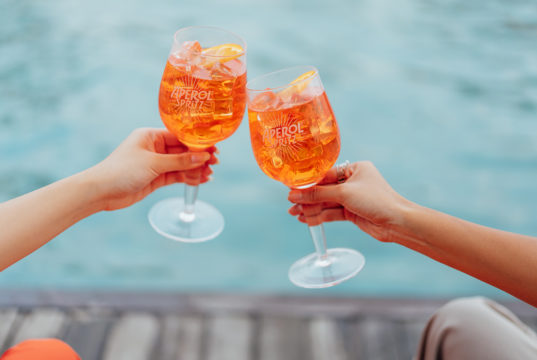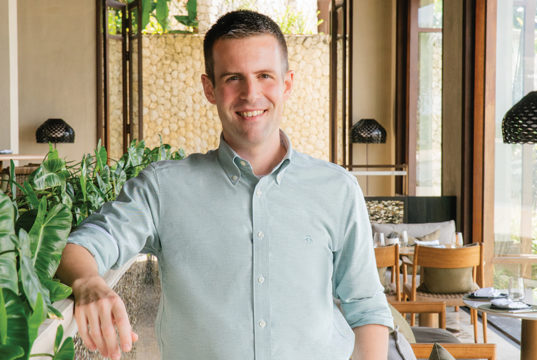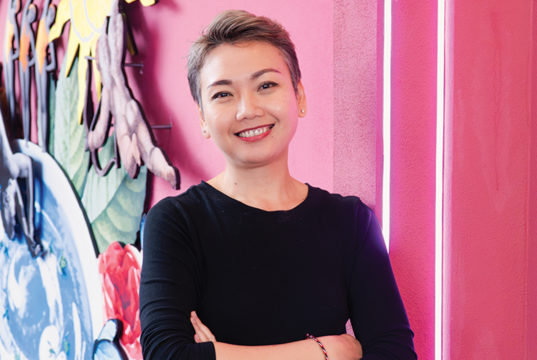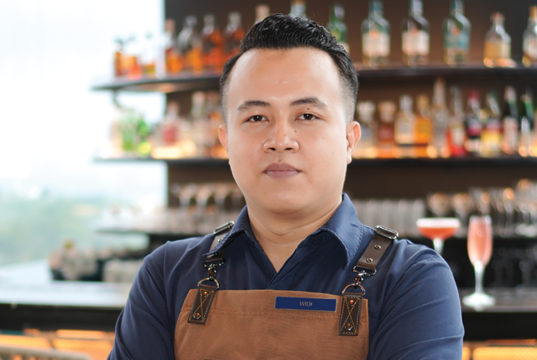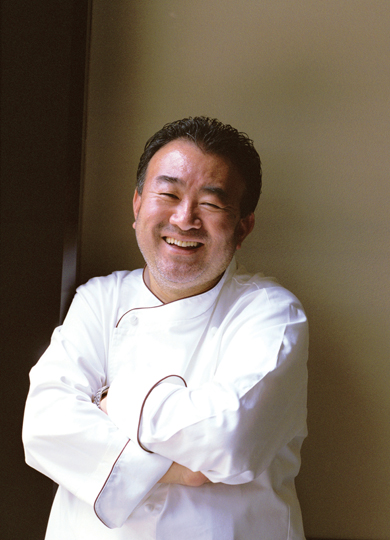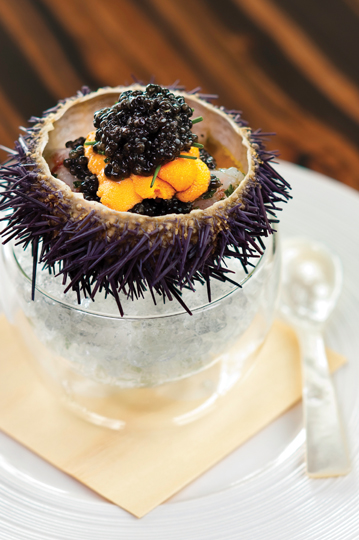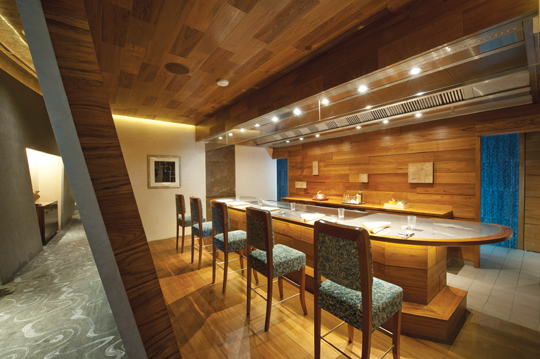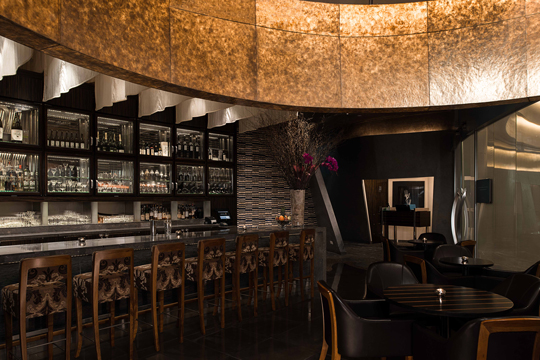Restaurateur/Chef
From wanting to learn English in Japan to becoming a chef and opening his first restaurant, Tetsuya in Australia, Tetsuya Wakuda has come a long way. Now he tells the story of his latest restaurant, Waku Ghin in Marina Bay Sands, Singapore, and his culinary values.
—
E: When and how did you first discover you had a passion for cooking? Can you tell the story of your kitchen journey prior to opening your first restaurant, Tetsuya’s?
Wakuda: I stumbled into the culinary world by accident when I first arrived in Sydney at 22 years old. I grew up in Hamamatsu, Japan, and as a child, I dreamt of living overseas. I was eager to experience life outside of Japan and to learn English. I didn’t know much about Australia then, except for its koalas and kangaroos. I was lucky to have a friend who got me a job as a kitchen hand at Fishwives in Surry Hills in 1982 as he felt that it would be the best place for me to pick up English for free, and to earn some money for my expenses. Since then, I fell in love with the food and with the country and have never looked back. Afterwards I learned about classic French techniques at Kinsela’s with Chef Tony Bilson, the start of my cooking style, which combines French techniques with Japanese philosophy using natural, seasonal flavours. In 1983 I opened Ultimo’s with a partner, and in 1989, I had the opportunity to open my own restaurant, Tetsuya’s, which later was relocated to the CBD at a refurbished heritage-listed site at 529 Kent Street. In 2010, I was invited to open Waku Ghin at the iconic Marina Bay Sands in Singapore.
E: What have been your biggest inspirations?
W: When I see good, fresh ingredients, my imagination fires up. I get very inspired from the ingredients themselves. Nothing can beat good quality, fresh ingredients.
E: You have come a long way from Japan to Australia, to opening another restaurant in Singapore, what has been your biggest obstacle in achieving success, and how did you overcome it?
W: As a restaurateur and chef for the last three decades, I feel what’s most important is keeping our core audience – our guests – happy. This goal is what we strive for every day at Waku Ghin, with our dishes showcasing the finest ingredients alongside exemplary service. It is not easy for any restaurant to deliver at such a high standard every single day, but consistency is key to the experience of our guests. I’m glad that I have an outstanding team of unsung heroes in the restaurant who work tirelessly behind the scenes.
E: How would you describe your cooking style in general, and also in particular in Waku Ghin?
W: The dining experience in Waku Ghin is personalised and intimate. The restaurant’s dining concept is based upon a multi-faced use of space where diners can move from room to room, luxuriating over the dining experience. The 8,000 square foot restaurant seats 25 people at any one time, providing a truly bespoke experience. Each private enclosure is helmed by a chef, bringing forward the season’s best to the Chef’s Table over a 10-course degustation menu that showcases a European-Japanese cuisine. Diners then move on to the main dining room or drawing room to relax over desserts, coffee and a digestif. I’ve always wanted to do a chef’s table, and I get to do that at Waku Ghin, which has four private dining rooms. This closeness between the chef and our diners reminds me of my earlier days. When I first started out 25 years ago, it was just one person in the kitchen, a dishwasher and a crowd of diners in front of me. So those days of struggling to cook for 30 people in a hot kitchen, and them applauding me at the end of the night – that’s the kind of intimacy that I wanted to recapture. Of course, over here, everything is more luxurious, but the chef’s table concept reminds me of the good old days.
E: In cooking, how do you maintain your identity while bringing in new ideas and innovations?
W: I try to stay true to my philosophy in cooking, which is using natural and seasonal flavours in my dishes, with the best ingredients that I can get from around the world. Over the last few decades, food trends have been changing massively. Regardless, my cuisine always stays simple. From time to time, dishes evolve depending on the availability of ingredients, but to me, great produce does not require too much intervention or it loses its original form.
E: Can you tell us about a signature dish at Waku Ghin?
W: One of our signature dishes at Waku Ghin is the marinated Botan shrimp with sea urchin and caviar comprising three of my favourite ingredients. The dish is delicately prepared with the sea urchin lightly seasoned with Japanese soy and mirin to enhance the natural flavours and the Botan shrimp is marinated with salt, pepper, olive oil, shallots and tarragon. Served together with Oscietra caviar, the flavour of the whole dish comes together and is well-balanced without overpowering any of the ingredients. Simple yet sophisticated.
E: You’ve been through quite the journey as a chef, what future goals do you have?
W: I’m always working on new projects. At Waku Ghin, we have just extended the menu at The Bar at Waku Ghin. It’s a great experience not only for our regulars, but also for those who have never visited Waku Ghin before. The extended bar menu now features over 15 à la carte items including new dishes which are my favourites, such as the sea urchin and salmon roe set on rice, and toasted Parma ham and black truffle sandwich. It also includes a selection of oysters, caviar, pastas and cheeses, as well as a daily selection of exquisite petit cakes from Patisserie Platine, our pastry offshoot. At The Bar at Waku Ghin, guests can also enjoy over 85 handcrafted cocktails that feature the art of Japanese-style cocktail-making at its best. It is also stocked with an equally impressive selection of whiskies from Japan, America, Canada, Ireland and Australia and a well curated selection of sake, including the exclusive Waku Ghin Isojiman Junmai Daiginjo M label produced for me.




